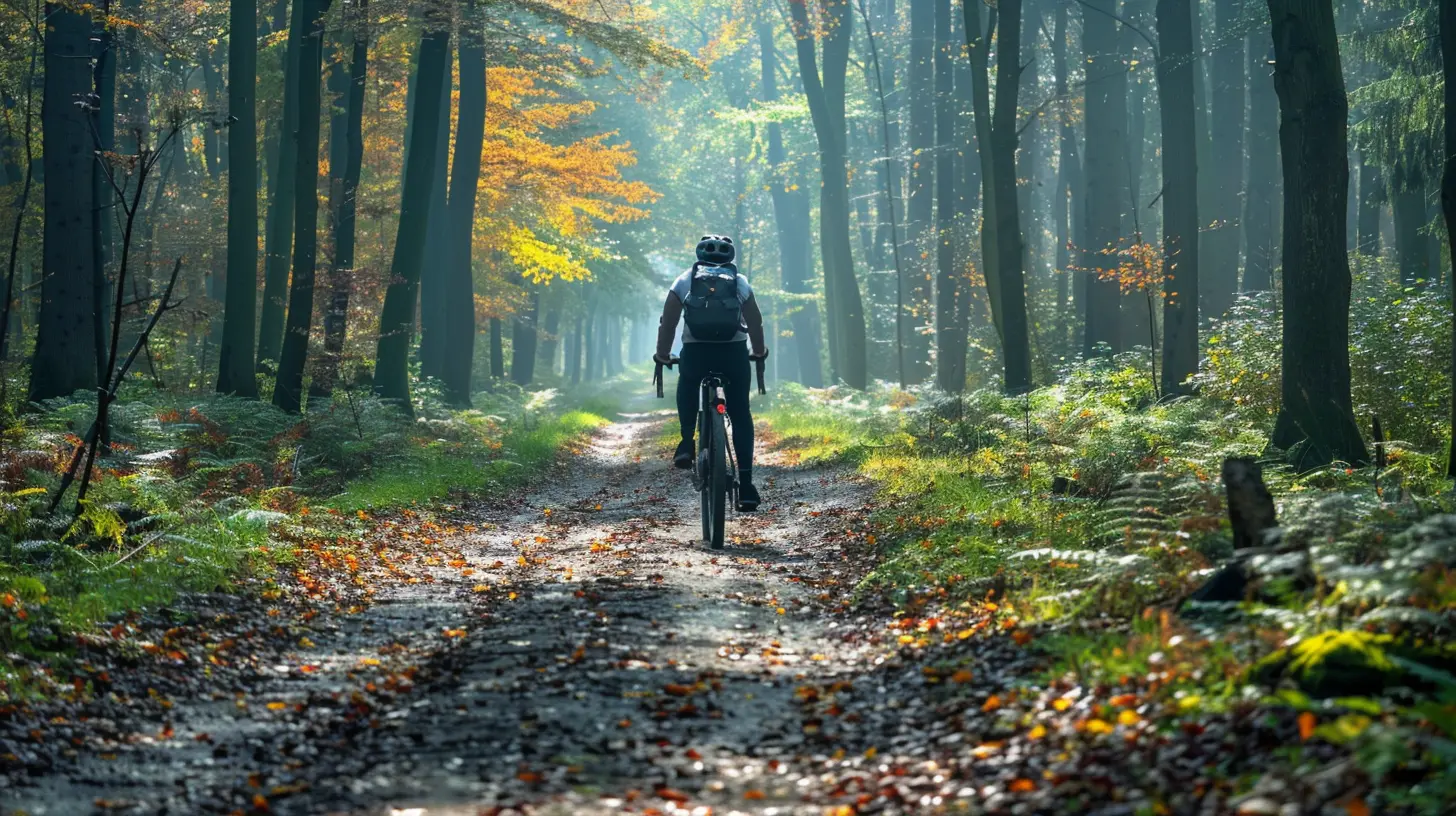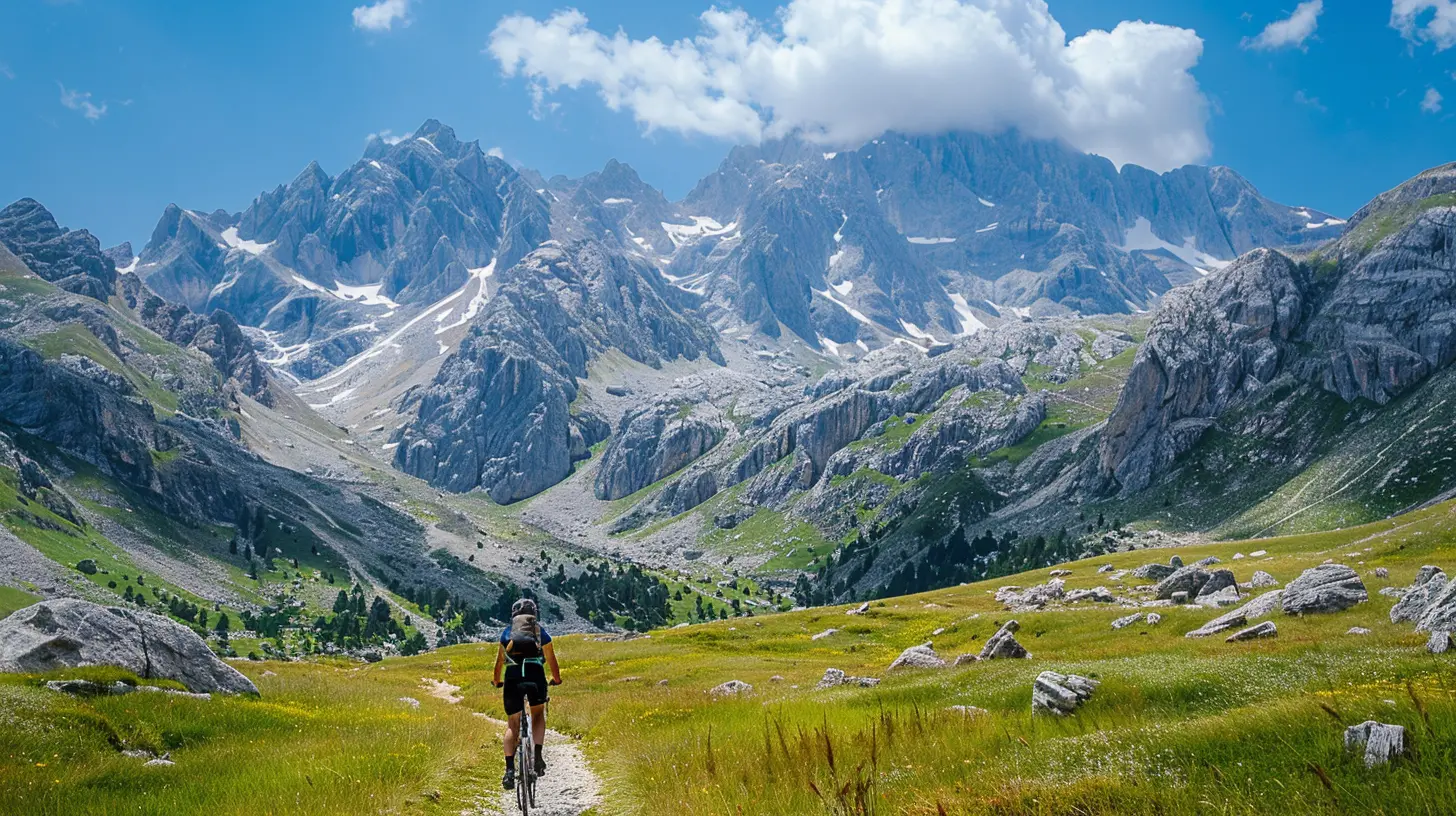10 April 2025
Switching from road cycling to mountain biking can feel like stepping into a whole new world. The terrain is rougher, the handling is different, and the skills required are more technical. But if you're looking for an adventure that takes you off the beaten path and into nature’s playground, mountain biking is the way to go.
Making the transition can be challenging, but with the right mindset and techniques, you’ll be carving up trails in no time. In this guide, we’ll break down everything you need to know about shifting from the smooth pavement to the unpredictable dirt trails. 
Understanding the Key Differences
Before you hop on a mountain bike, you need to be aware of the significant differences between road cycling and mountain biking.1. Terrain and Riding Style
Road cycling is all about speed, efficiency, and endurance on smooth pavement. In contrast, mountain biking throws in obstacles like rocks, roots, mud, and steep climbs. You’ll need to be ready for sudden changes in terrain and elevation, requiring quick reflexes and better bike control.2. Bike Geometry and Setup
Mountain bikes are built to handle rough terrain with:- Wider Tires – More grip and shock absorption.
- Suspension Systems – Front suspension (hardtail) or full suspension (both front and rear) to handle bumps.
- Lower Gearing – Designed for steep climbs and technical trails.
- Flat Handlebars – Better control for maneuvering obstacles.
If you're used to the aggressive, aerodynamic road bike position, the upright stance of a mountain bike may feel strange at first.
3. Braking Techniques
Road cyclists are used to gentle, progressive braking, but mountain bikers need to master precise brake control. Mountain bike brakes are powerful, and grabbing them too hard can send you over the handlebars. Instead, learn to feather the brakes and use both front and rear brakes strategically to maintain control.4. Pedaling Efficiency and Cadence
On the road, maintaining a steady cadence is crucial for efficiency. On trails, however, your pedaling rhythm will constantly change because of sudden inclines and obstacles. You'll need to work on quick bursts of power rather than long, sustained efforts.
Essential Skills You Need to Develop
Transitioning from road cycling to mountain biking isn't just about getting a new bike. You’ll need to develop new riding skills to confidently tackle trails.1. Body Position and Balance
Unlike road cycling, where you're mostly seated, mountain biking demands constant adjustments in body position. Practice these key positions:- Neutral Position – A relaxed stance with bent elbows and knees, ready to absorb bumps.
- Attack Position – A more aggressive stance with your butt off the saddle and weight balanced over the bike, essential for technical sections and descents.
2. Cornering Techniques
In road cycling, smooth cornering is about leaning into the turn with minimal movement. In mountain biking, however, you’ll need to use more body movement:- Shift your weight to the outside pedal for grip.
- Lean the bike, not just your body.
- Look where you want to go, not at obstacles.
3. Climbing and Descending
Climbing on a mountain bike is different from grinding up a steady road incline. Trails often have steep, uneven climbs that demand bursts of power. Keep your weight forward and your cadence high to maintain traction.Descending requires confidence. Instead of hugging the saddle, stand up slightly with your knees and elbows bent, letting the bike move beneath you.
4. Learning to Handle Obstacles
Unlike the predictable road surface, mountain biking is full of surprises. Logs, rocks, and roots demand quick reactions. Learn to:- Lift your front wheel to roll over obstacles (manuals and bunny hops help).
- Absorb shocks with your legs and arms instead of relying solely on suspension.
- Pick the best line rather than just riding straight ahead. 
Adjusting Your Mindset
Beyond technique, transitioning to mountain biking requires a mental shift.1. Forget About Speed (At First)
If you’re used to flying at high speeds on the road, mountain biking might feel painfully slow at first. Trails aren’t about speed; they’re about control and fun. Focus on handling the bike first—speed will come naturally with experience.2. Expect to Fall
Let’s be real—you're going to take a few spills. Falling is part of learning. Wear proper protective gear, and don’t get discouraged. Even experienced riders crash from time to time.3. Stay Loose and Adaptable
Mountain biking rewards flexibility. The more relaxed and adaptable you are, the better you’ll handle unexpected obstacles and changes in terrain. Stiffening up will only make things harder.4. Develop Trail Awareness
Unlike predictable road riding, trails can throw surprises at you. Keep your eyes ahead, scanning for obstacles. The key is to always anticipate what’s coming next.
Choosing the Right Gear
You can’t just throw your road bike onto a dirt trail—having the right gear makes a huge difference.1. The Right Mountain Bike
Choosing a mountain bike depends on the type of riding you want to do:- Hardtail (Front Suspension Only) – Lighter, more efficient for climbing, and great for trail riding.
- Full Suspension (Front and Rear Shock Absorption) – More comfortable on rough terrain, perfect for technical descents.
If you’re just starting out, a hardtail is a great choice to develop fundamental skills.
2. Protective Gear
Mountain biking has a higher risk of crashes, so proper protection is a must:- A Well-Fitting Helmet – A mountain bike-specific helmet offers better rear skull protection.
- Gloves – Help with grip and protect your hands in case of a fall.
- Knee and Elbow Pads – Useful for technical and downhill riding.
- Cycling Glasses – Shields your eyes from dirt and debris.
3. Footwear and Pedals
Many road cyclists ride with clipless pedals, but for mountain biking, flat pedals (with grippy shoes) are a great starting point. They allow quick foot adjustments and give you confidence while learning. Once you get better, you can switch back to clipless.4. Hydration and Repair Kits
On the road, stopping at a café for a quick refill is easy. On the trails, you’ll need to be more self-sufficient. Always carry:- A hydration pack or a water bottle.
- A multi-tool, tire levers, and spare tubes in case of a mechanical failure.
- A small first aid kit just in case.
The Best Way to Make the Transition
The best way to transition is to start small and progress gradually.1. Find Beginner-Friendly Trails
Look for easy trails to start. Green-rated (beginner) trails are best, as they’re smoother and less technical.2. Ride with Experienced Mountain Bikers
Hitting the trails with experienced riders will help you progress faster. They can give you tips on tackling obstacles, braking, and choosing lines.3. Take a Skills Clinic
If you want to fast-track your learning, consider taking a mountain biking skills course. Certified instructors can teach you proper techniques and boost your confidence.4. Be Patient
Mountain biking takes time to master. Don’t get frustrated if things don’t click right away. Stick with it, and soon enough, you’ll be gliding over roots and rocks like a pro.Final Thoughts
Switching from road cycling to mountain biking is more than just swapping bikes—it’s adopting a whole new riding style, learning new skills, and embracing a different mindset. It might feel awkward at first, but with practice, patience, and the right gear, you’ll start enjoying the thrill of the trails.So, what are you waiting for? Get out there, hit the dirt, and start your mountain biking adventure!






Calder Riley
Transitioning from road cycling to mountain biking offers a thrilling change of scenery and challenge. Focus on adjusting your bike setup for off-road conditions, practicing bike handling skills on varied terrains, and building strength for climbs and descents. Embrace the adventure and remember to enjoy the natural landscapes that mountain biking provides!
April 19, 2025 at 3:01 AM